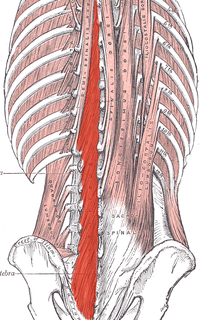
Photo from wikipedia
OBJECTIVE Changes in muscle architecture after stroke are usually assessed by investigating inter-limb differences. As a result bilateral changes of muscle architecture might be missed. Our aim was to investigate… Click to show full abstract
OBJECTIVE Changes in muscle architecture after stroke are usually assessed by investigating inter-limb differences. As a result bilateral changes of muscle architecture might be missed. Our aim was to investigate whether bilateral architectural changes in skeletal muscle can be detected in chronic, physically active stroke patients using quantitative muscle ultrasound (QMUS). METHODS Twenty-eight patients (mean time since stroke 5.2years, median Brunnström stage 4) were recruited. QMUS images were obtained bilaterally from 2 arm and 4 leg muscles. Corrected echogenicity (muscle ultrasound grayvalue) and muscle thickness were compared to reference values obtained from healthy subjects. Correlations of muscle changes with demographic, clinical and neurophysiological characteristics were explored. RESULTS Out of 6 muscles, a significant increase in mean echogenicity was found in 4 paretic and 3 non-paretic side muscles. Significant decreases in mean muscle thickness were found in 2 paretic side muscles and 1 non-paretic side muscle. Echogenicity of the medial gastrocnemius correlated moderately with walking speed (inversely) and time since stroke. CONCLUSIONS This study showed that QMUS is a feasible technique to investigate architectural changes in skeletal muscles in the chronic phase of stroke and that abnormalities can be found in muscles on both the hemiparetic and non-paretic side. SIGNIFICANCE Intriguing data on bilateral changes in muscles of people with stroke is presented. Directions for future research are provided.
Journal Title: Clinical Neurophysiology
Year Published: 2017
Link to full text (if available)
Share on Social Media: Sign Up to like & get
recommendations!